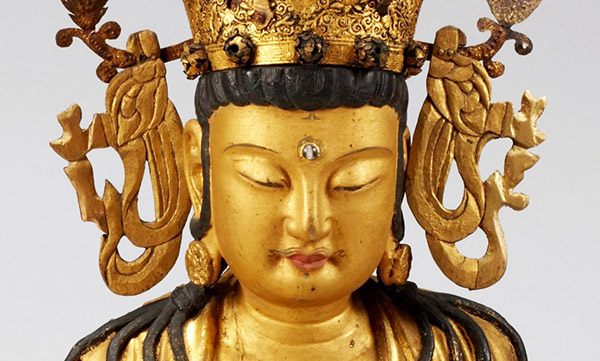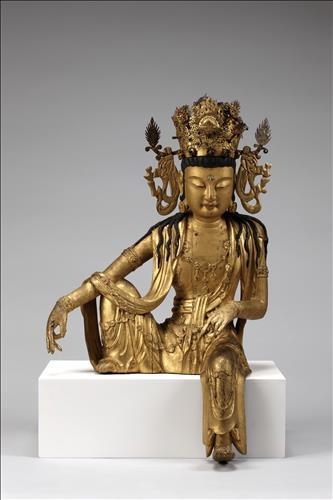CulBeat Express
2019.09.05 15:49
고려 목조관음보살좌상 워싱턴 DC 아서새클러 갤러리 특별전(9/21-3/22, 2020)
조회 수 7592 댓글 0
국립박물관 소장 고려시대 목조관음보살좌상(木造觀音菩薩坐像)이 9월 21일부터 내년 3월 22일까지 워싱턴 DC 스미소니언 계열 아시안미술관 아서 M. 새클러 갤러리(Arthur M. Sackler Gallery)에서 전시된다.
Sacred Dedication: A Korean Buddhist Masterpiece
September 21, 2019 - March 22, 2020
Arthur M. Sackler Gallery

Detail, Bodhisattva Avalokiteshvara (Gwaneum bosal). Korea, Goryeo period, ca. 1220?1285. Gilt wood and gilt copper and iron with crystal inlays. National Museum of Korea, Seoul
A single object, a beautiful gilt wood sculpture of Gwaneum, the bodhisattva of compassion and the most popular deity in Korean Buddhism?is the focus of this loan exhibition from the National Museum of Korea. Carved in the late Goryeo period (918-1392), this crowned image is now known to be the oldest surviving gilded wood figure in an informal pose. Its posture, with one leg raised and the other lowered, is associated with the deity’s dwelling place, where he sits calmly on rocks above the crashing waves of the sea. The same subject in a similar pose was common in devotional paintings, such as the hanging scroll of Suwol Gwaneum bosal (Water-Moon Avalokiteshvara) now in the collection of the Freer Gallery.
Sacred texts and potent symbolic objects were sealed inside this hollow religious sculpture when it was first placed into worship in the thirteenth century. The practice of adding dedication material to a Buddhist sculpture during consecration ceremonies was believed to transform it into a living body. Recent research conducted by the National Museum of Korea provides new information about this rare sculpture, its hidden contents, and the special rituals that surrounded image consecration in Korea centuries ago.
 Bodhisattva Avalokiteshvara (Gwaneum bosal)
Bodhisattva Avalokiteshvara (Gwaneum bosal)Collections: Korean
The simple forms, spare decoration, and monochrome glazes of Joseon period (1392-1910) teabowls first attracted Charles Lang Freer to Korean ceramics. He expanded his collection to include Goryeo dynasty (918?1392) celadons, which had once adorned palaces, Buddhist temples, and private residences of the aristocracy. The same aristocratic patrons commissioned exquisite Buddhist paintings, such as the three rare examples now held by the museum.
During the last twenty years of his life, Freer acquired nearly 500 Korean art objects, including approximately 130 Goryeo and 80 Joseon ceramic pieces. When the Freer Gallery of Art opened its doors in 1923, Freer’s assembly of Korean art was considered unparalleled in quality and historical scope.







